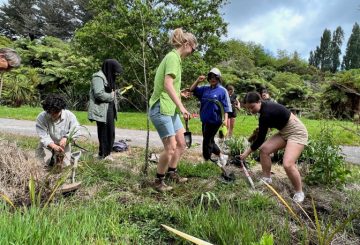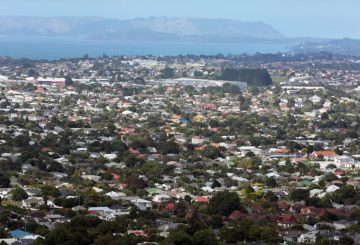오클랜드의 TVNZ는 국영 방송사의 업무를 줄일 추가 비용 절감 및 조직 개편 계획을 발표했습니다.이로 인해 작년의 실패한 미디어 합병이 기회를 잃은 것이 아닌지에 대한 의문이 제기되고 있다.
ACT의 데이비드 시모어 (David Seymour) 리더는 최근 TVNZ Q+A에서 차터 스쿨이 미래에는 성공할 것이라고 주장했다.진행자 잭 테임 (Jack Tame) 은 미디어의 미래가 훨씬 더 어려울 수도 있다고 농담했습니다.이전에 뉴스 프로그램을 중단한 이후, 테임은 무료 방송 TV를 절약하는 것을 타이타닉호를 구제하는 것에 비유하며 좌절감을 드러냈습니다.
Digital+라고 불리는 TVNZ의 계획은 비용을 절감할 방법을 찾는 것을 목표로 합니다.TVNZ는 인기 프로그램이 중단되었던 과거의 삭감과는 달리, 이번 라운드에서는 개별 일자리가 줄어들지 않을 것이라고 말합니다.그들은 곧 직원들과 제안서를 공유할 계획입니다.계획의 일부에는 2월에 생방송 뉴스 사이트인 1NewsNow를 폐쇄하고 청소년 사이트 Re: News를 비디오에만 집중하도록 전환하는 것이 포함됩니다.
지난 7월, TVNZ의 뉴스 담당 임원은 2023년에 매출이 3천9백만 달러 감소했다고 보고한 이후 다음 회계연도에 3천만 달러를 저축하거나 새로운 수익을 창출해야 한다고 밝혔다.
올해 초 TVNZ는 재무 전략의 일환으로 콘텐츠와 직원을 대폭 삭감한다고 발표했습니다.그들은 직원들에게 온라인 플랫폼인 TVNZ+에서 여전히 좋은 시청자 점유율과 성장세를 보이고 있다고 확신시켰다.하지만 디지털 광고 수익은 기존 TV 광고보다 낮습니다.
유료 구독 서비스를 만들면 수익은 증가할 수 있지만 경쟁으로 인한 리스크에 직면할 수 있습니다.TVNZ는 스트리밍 지원을 위해 1억 달러 규모의 디지털 기술 업그레이드를 계획하고 있습니다.
미디어 환경 전반에서 스트리밍으로의 전환이 일어나고 있으며, Freeview 역시 기존 방송에서 벗어나고 있습니다.TVNZ가 국영 상업 방송사로서 갖는 독특한 입지는 시청자 습관이 변화함에 따라 어려움을 겪을 수 있습니다.
이전 정부는 TVNZ와 RNZ를 합병하여 새로운 공공 미디어 단체를 설립할 것을 제안했지만, 이 계획은 선거 전에 철회되었습니다.비평가들은 이를 불필요하다고 설명했다.
또 다른 국영 방송사인 와카타 마오리 (Whakaata Māori) 의 CEO는 자금 문제로 인해 뉴스 서비스를 중단할 가능성이 있다고 언급했습니다.폴 골드스미스 (Paul Goldsmith) 미디어 장관은 미디어의 심각한 금융 위기를 인정하면서 TVNZ가 신속하게 변화를 꾀해야 할 수도 있다는 신호를 보냈다.






























































